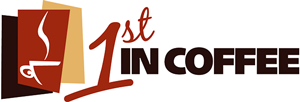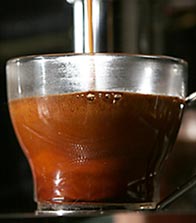Coffee Etiquette Around the World
When it comes to dining etiquette, it is different all around the world. From the United States, to Spain, Africa to Japan, the world eats differently. And the world drinks differently too. The myriad ways in which the world drinks coffee is vastly different too. For instance, in India, slurping coffee is normal whereas it’s considered rude in US. In Turkey, your fortune is read from the coffee ground left at the bottom of your cup whereas in Ethiopia, coffee drinking is an hour affair- not a to-go option. Here is a handy guide to help you maneuver through the world’s coffee drinking experience.
Coffee Drinking in Italy
In Italy, it is common for a glass of water to be served alongside coffee, so that you can cleanse your palate and prepare it for the coffee. Coffee is always ordered after meals, never before or during. Also, espressos are not ordered to go. Espressos are drunk quickly in a shot at the coffee bar. It is also common to have a cappuccino in the morning, and nothing else. It is also common in Italy for liquor to be included in coffee.
Coffee Drinking in Turkey
After meals, black Turkish coffee is served strong with sweet Turkish candy. As Turkish coffee is strong, it is never ordered double. If you want more to drink later, then your next order should be tea. Also, sugar is often added while the coffee is made, and not after. Once your coffee is drunk, it is often normal to have your fortune read from the coffee grounds at the bottom of your cup.
Coffee Drinking in France
Dunking a croissant in coffee is acceptable in France. Café au lait is normally drunk early in the morning and using a wide mug so it is easier to dunk your croissant in. Coffee mugs can be held with both hands to savor your coffee. In France, never order flavored coffee; never order filtered coffee, and never order coffee with whipped cream. Coffee in France is always served after dessert.
Coffee Drinking In Bosnia
Coffee preparation in Bosnia is similar to that in Turkey. Coffee is served in a Dzezva, together with sugar cubes, rahat lokum and a glass of water. The proper way to drink your coffee is to take the sugar cube, and let it dissolve under your tongue while you sip the coffee.
Coffee Drinking in Vietnam
Coffee in Vietnam is served using an individual drip filter. Hot water is poured onto the coffee grounds in the drip filter and the dissolved coffee slowly fills the cup underneath with fresh coffee. Condensed milk and sugar is added into the cup at the bottom.
Coffee Drinking in Spain
A very popular drink both in Spain as well as Portugal is called Cortado, which is based off of the espresso. To reduce the acidity of the coffee, a bit of warm milk is added to the coffee. Cortado is drunk for breakfast as well as during La Merienda which is coffee and snack time, usually happens after a siesta.
Coffee Drinking in Ethiopia
Coffee is considered a national drink in Ethiopia and is a long ritual that stretches for two hours. Sugar is added into small cups, and then water is added followed by coffee. It is normal and customary to inhale the aroma of the coffee before sipping it. Coffee is served in three rounds which are awol, tona and Baraka. When drinking coffee in Ethiopia, it is always sipped slowly and never drunk quickly.
Coffee Drinking in Denmark
Due to the extremely cold climate during Scandinavian winters, Denmark ranks highest in the world for coffee drinkers. Cafes are usually packed at every street corner especially in Copenhagen. Filter coffee is especially popular in Denmark and is normally eaten with sweet Danish pastries.


1 Comment
This is excellent AOC. Been to many of these countries and it’s always best when we know the customs and don’t stick out like a sore thumb. Thanks for this article,